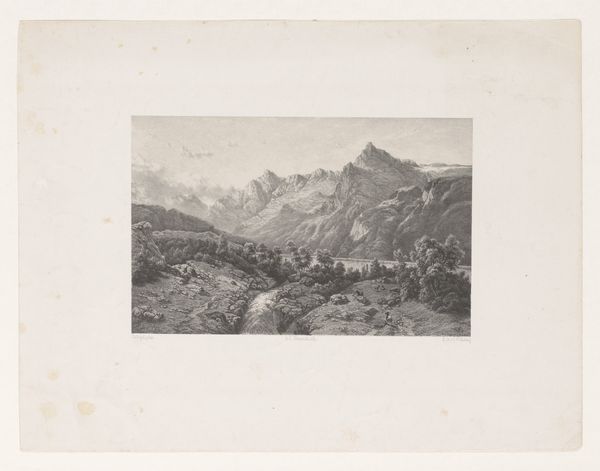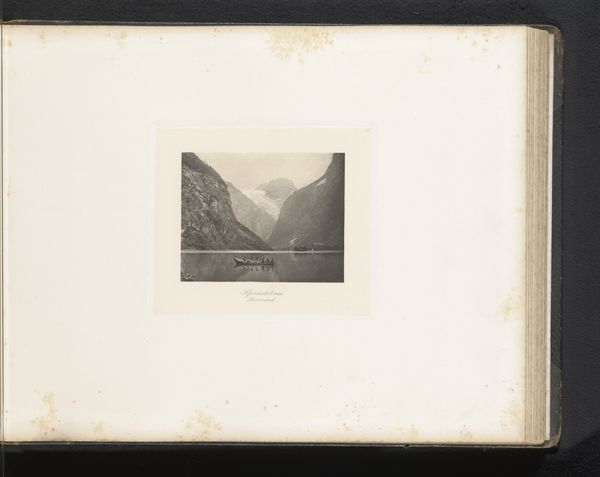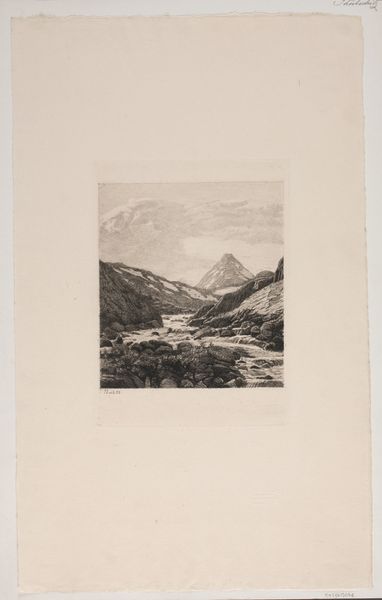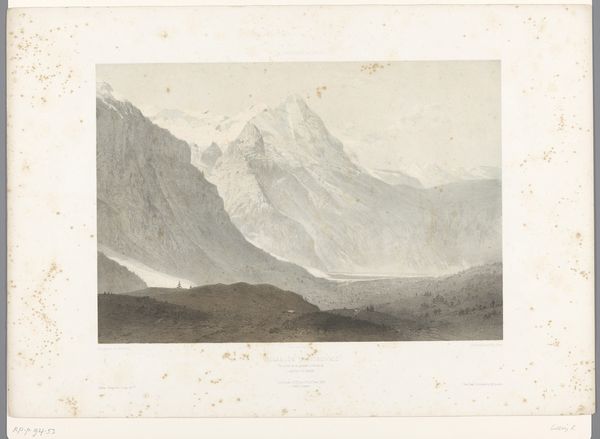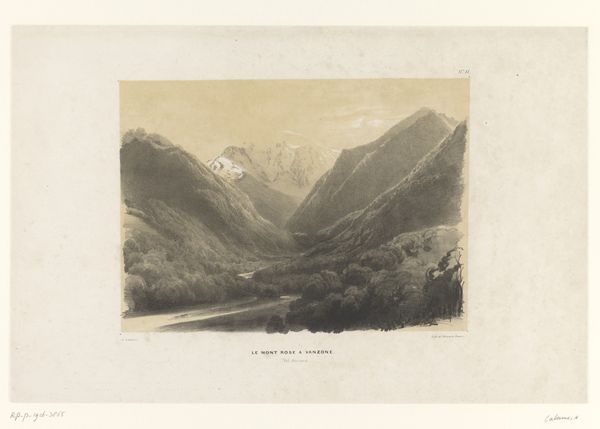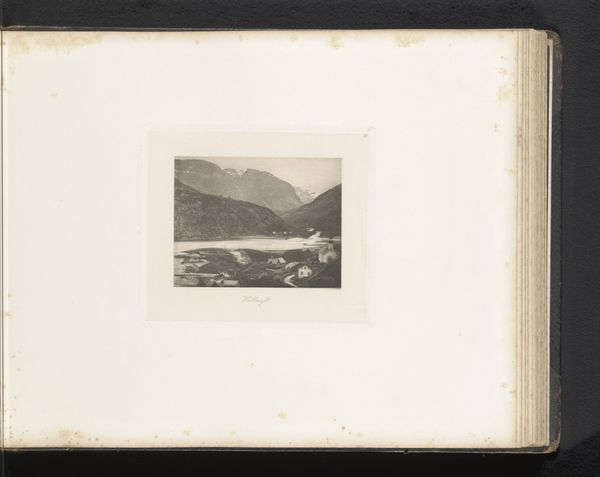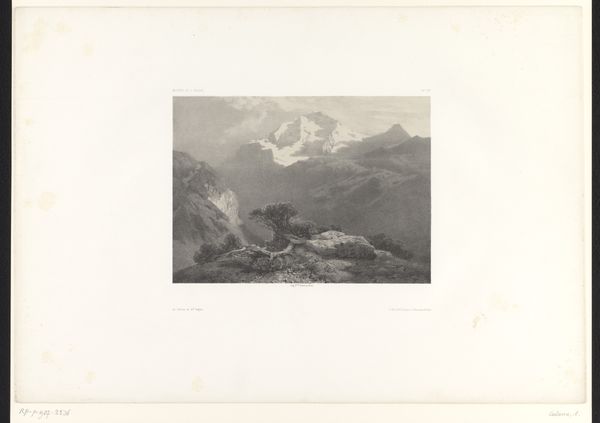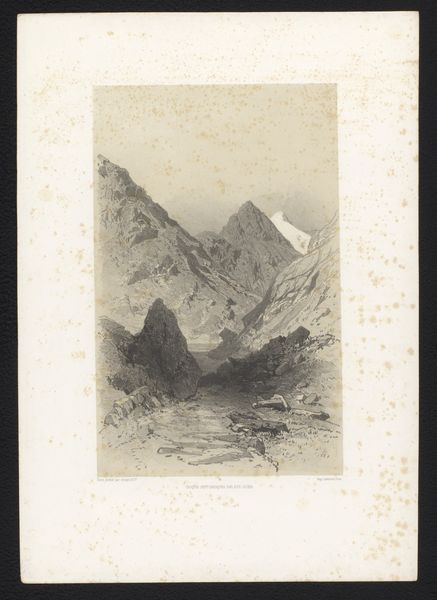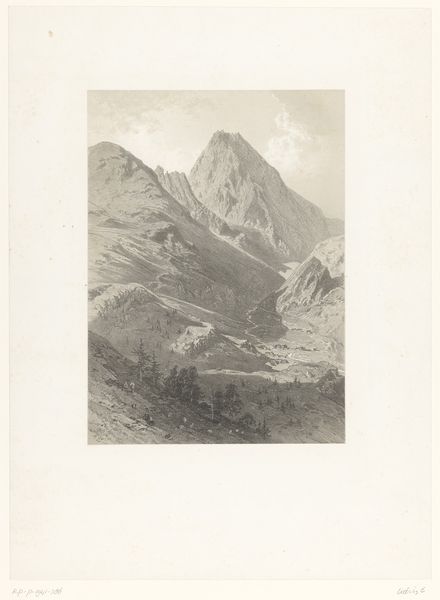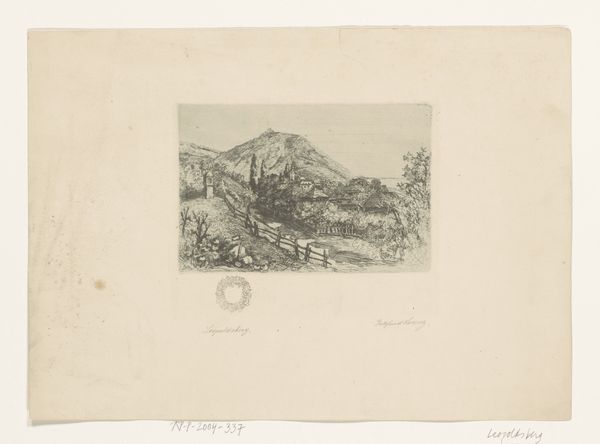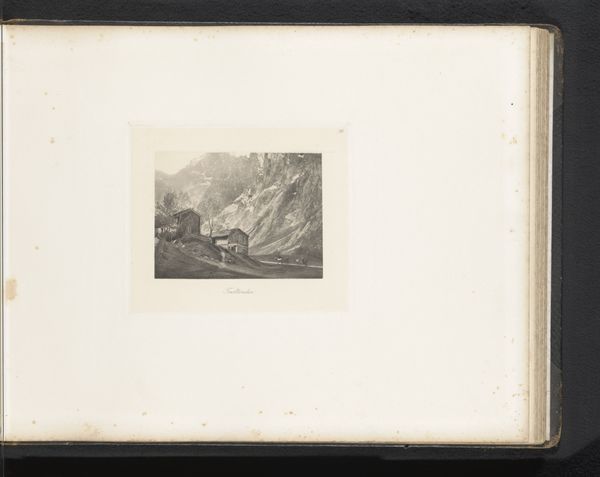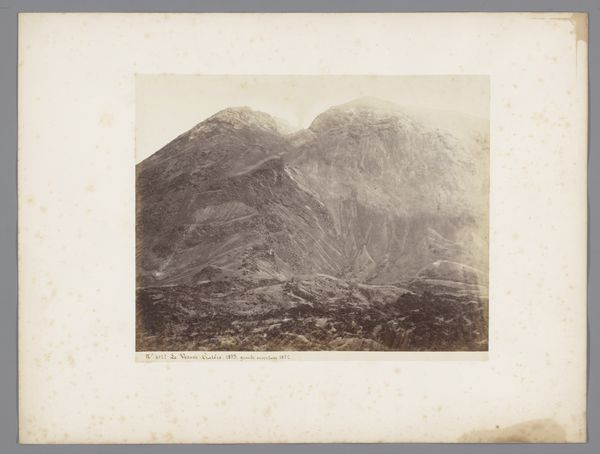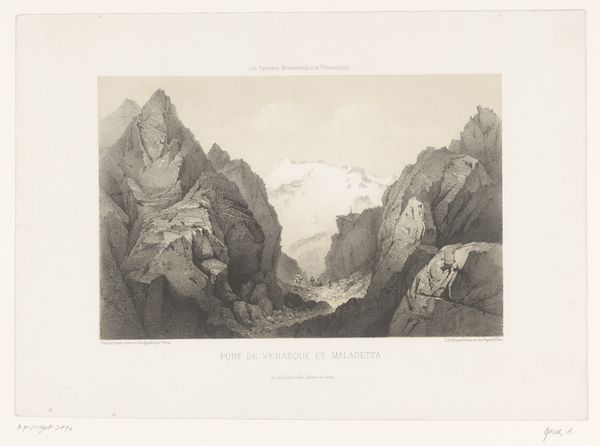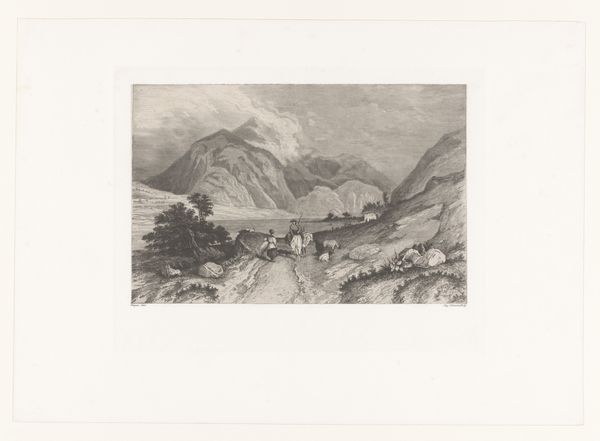
Dimensions: 6.9 x 6.7 cm. (2 3/4 x 2 5/8 in.)
Copyright: Public Domain
William Henry Fox Talbot made this photograph of the Mer de Glace glacier in Montanvert using his innovative calotype process. This technique, a forerunner to modern photography, involved coating paper with silver iodide, exposing it to light in a camera, and then developing the latent image. The resulting print bears the marks of its making. The paper’s texture softens the image, giving it a hazy, almost dreamlike quality. The tones range from warm grays to rich blacks, capturing the ruggedness of the glacial landscape. But the real innovation here is how Talbot used chemistry to fix an image made by light – effectively mechanizing image-making. Talbot's method democratized image production. It contrasts with the labor-intensive processes of painting or engraving. His invention signaled a shift towards mass production and consumption of images, impacting artistic practices and visual culture. It's important to consider the social and economic implications of this new medium.
Comments
No comments
Be the first to comment and join the conversation on the ultimate creative platform.
